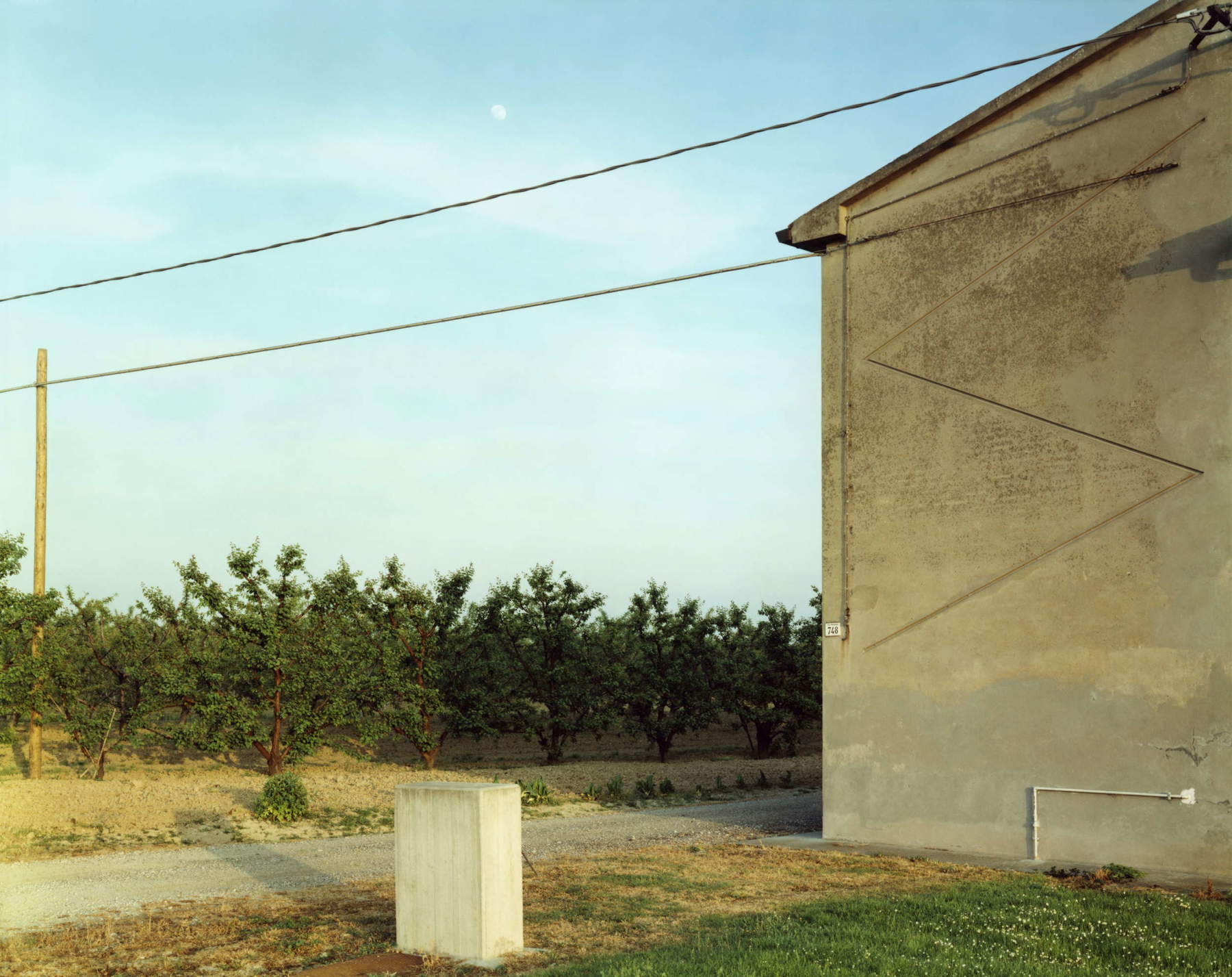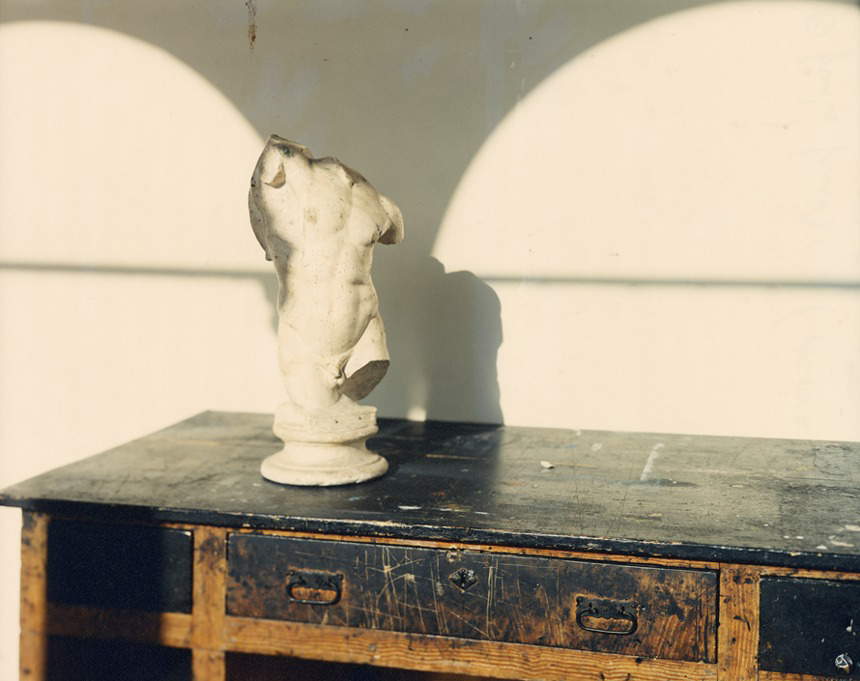The work of Guido Guidi (Cesena, Italy, 1941) can be compared to that of a geologist who, instead of looking for gold or diamonds, focuses on sedimentary rocks and seemingly ordinary cracks in the ground. Guidi is not looking for spectacular beauty (the untouched mountain), but for the historical and conceptual layering inherent in concrete, provincial walls, and random framing. His importance lies precisely in his ability to have transformed the simplicity of the everyday into a complex treatise of visual philosophy, demonstrating that the act of photographing is a continuous and profound dialogue between the eye, time and the camera, not just an aesthetic recording. His role has been clarified by the major exhibition Guido Guidi. With Time, 1956 - 2024, the largest exhibition ever dedicated to the author, curated by Simona Antonacci, Pippo Ciorra and Antonello Frongia, which after its debut at MAXXI in Rome from December 13, 2024 to March 30, 2025 continued with a second stop in Udine, in the spaces of the Museum of Modern and Contemporary Art - Casa Cavazzini, from September 27, 2025 to January 6, 2026.
Born in Cesena in 1941, Guidi is recognized as a fundamental master of photography today. His research activity, which began in the 1960s, had the ability to profoundly redefine the relationships between the image and its surroundings, as well as those between photography and the field of architecture, exerting a lasting impact on so many photographers (one of them, for example, is Enrico Amici). His importance is not limited only to the artistic level; Guidi is considered an indispensable point of reference in the educational sphere as well, on the strength of his teaching experience at the IUAV University of Venice. The value of his work is confirmed by the presence of his creations in the collections of some of the world’s most prestigious museums, including MoMA in New York, the Centre Pompidou in Paris and the San Francisco Museum of Modern Art.

Guidi’s work can also be seen as a vast narrative spanning more than sixty years. The very title of the Rome and Udine exhibition, Col tempo, taken from a scroll of a painting by Giorgione, symbolizes the artist’s entire output and the point of arrival reached through the passage of time.
Guidi belongs to that group of internationally prominent authors who have marked a turning point in the way we perceive and interact with the landscape. His artistic perspective is distinguished by a vision that is both rigorous and imbued with poetry. Moreover, he has given rise to one of the most influential visual poetics in contemporary culture, developed through an intense meditation on the language of the image. His work conceptually addresses crucial issues concerning the mechanism of visual representation, treating photography as a true language that communicates through its own system of signs. Each of Guidi’s shots encapsulates a reflection on the very act of seeing, the medium employed to capture reality and the inexorable passage of time.
Guidi finds the foundations of this visual “writing” not in the idyllic scenery, but in the everyday, haphazard and seemingly quality-free landscape of the province in which he has always lived, particularly his Romagna, which he has photographed insistently throughout his career. His vision is radical in that he rejects pre-established aesthetic hierarchies and traditionally privileged subjects, focusing on the seemingly insignificant details of the landscape and giving equal weight to both the banal and the monumental. This consistent and original research has continued uninterrupted since 1956.
Guidi’s path began with an important education, first at the University Institute of Architecture in Venice (IUAV), where he took courses from such eminent figures as Carlo Scarpa, Bruno Zevi and Mario De Luigi, and then at the Advanced Course in Industrial Design, studying with Italo Zannier and Luigi Veronesi. Already in his earliest images, in the 1950s, his peculiar ability to give a recognizable visual structure to even the simplest events of everyday life is evident. The works made between the 1960s and 1970s, such as the series Esercizi, Al mare and Attesa, are characterized by a stimulating uncertainty, typical of these early moments of experimentation. These photographic objects, curated with great care in the choice of their visual vocabulary, possess an intrinsic materiality, bearing with them the memory of their creation, the signs of their use and the imperfections due to craft production. Often, the optical precision typical of the photographic perspective is blended with the addition of inscriptions, intended to record information in the margins of the image, aspects that will remain constant in his work.

During the 1970s, Guidi experimented along two complementary directions: on the one hand, the use of small-format equipment to document his personal microcosm, private spaces and chance encounters in his travels between Veneto and Romagna. These photographs show complex compositions, distorted or anticlassical forms, where the field of vision can be blurred, compromised by movement or blinded by the artificial light of a flash. In series such as Coincidenze and Andata e ritorno, Guidi even experimented with abandoning total control over composition, shooting without bringing the camera to the eye. In Di sguincio, the theme of time is addressed through snapshots that aim to generate what he calls a “performance of encounter.” At the same time, since 1972, thanks in part to an in-depth study of the work of Walker Evans, Guidi has undertaken a lengthy investigation of ordinary provincial buildings, focusing in particular on the subject of the facade, whose almost anthropomorphic character he emphasizes.
The decade of the 1980s marks a crucial stylistic evolution: Guidi deepens his exploration of the built landscape, preferring the use of medium and large format. This technical choice responds to the need to achieve greater sharpness, more meticulous control over framing and slower creative process, while the use of color becomes increasingly systematic.
From the immediate vicinity of Cesena, while always maintaining a constant focus on the places of his life, the geography explored by Guidi expands significantly. After working on Naples, his focus shifts to Trieste, the Via Emilia, the industrial city of Marghera, and Graz, and on to the province of Milan. Despite adopting such devices as the 20x25, Guidi does not give up the “transgressions” that have always been a hallmark of his investigation of photographic language. An example of this is the work in Rubiera and Gibellina in 1989, where he tilted the apparatus sideways, achieving completely new compositional balances. In Rimini, in 1991, he used selective focus and tilting to develop a “subjective” gaze, bringing the viewer’s attention directly back to the act of seeing.
Guidi also interpreted the numerous assignments to document architecture and the territory, received from international and Italian institutions, with an essential philosophy: “The photographer has no ideas. He has to adapt to what is there. With that what can I do?” Between 1993 and 1996, he undertook a journey along the B1 road linking Kaliningrad and Santiago de Compostela, producing an unprecedented atlas of the spaces between the cities.

In the specific field of architecture, a commission from the CCA in Montréal offered him the opportunity to photograph several of Carlo Scarpa’s achievements, most notably the Brion Tomb. In this work, Guidi sought to penetrate the architect’s thought process, managing to uncover configurations of light and matter that until then had not been detected by scholars. Subsequently, Guidi turned his lens toward the architecture of masters such as Le Corbusier, Mies van der Rohe, and Álvaro Siza, highlighting plays of light, shadows, geometries, codes, and details that he detected almost “in spite of” the authors themselves. In Guidi, it is the masterpieces of these architects that are integrated into his personal landscape, and not vice versa.
The complexity and theoretical depth of Guidi’s thought are not only returned by the photographic prints, which, in the exhibition Col tempo, exceeded 350 works distributed in 34 sequences curated by the author himself. A key role is played by archival materials and display cases. Through notebooks, manuscript materials, volumes from his library, prints and specimens, visitors can delve into the evolution of his visual language. These thematic documents reveal his references, ranging from art history to contemporary masters such as Carlo Scarpa and Walker Evans, and delve into technical aspects related to printing and experimentation with different cameras.
Warning: the translation into English of the original Italian article was created using automatic tools. We undertake to review all articles, but we do not guarantee the total absence of inaccuracies in the translation due to the program. You can find the original by clicking on the ITA button. If you find any mistake,please contact us.